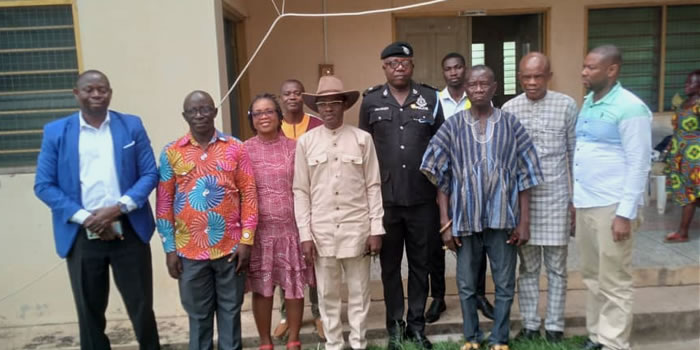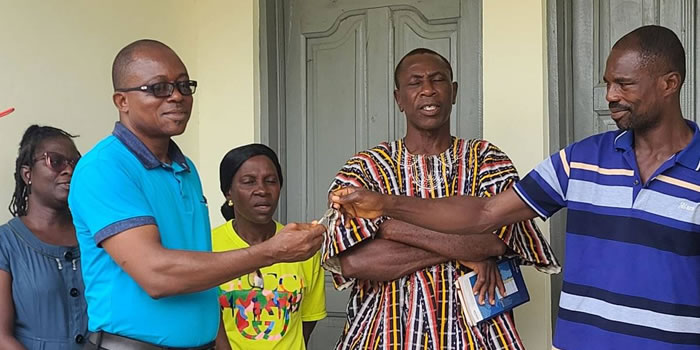

Financial Management of the Assembly
The Assembly prepares an estimate of its revenue and expenditure for the coming year by November of each year.
The disbursement of the Assembly’s share of the District Assemblies Common Fund (DACF) is done in strict compliance with the guidelines provided by the Administrator of the Fund, based on an approved Supplementary Budget of the Assembly.
The Assembly at the end of each month prepares a Trial Balance as a monitoring tool. The Budget Committee analyses the Trial Balance and takes action on any significant variances to bring the actual in line with the estimates.
The Finance and Administration Sub-committee of the Assembly also effectively performs its policy and supervisory role in the financial administration of the Assembly.
Income and Expenditure of the Assembly
The major source of finance of the Assembly is the District Assemblies Common Fund (DACF), constituting more than 46% of total revenue over the 2006-2009 periods. Releases have often been delayed and untimely. Aside the untimely release, there has also been unexpected deductions from source, which greatly affects cash flow for projects.
Other donor project funds and grants accounted for 40% of total revenue to the Assembly.
Internally Generated Fund (IGF)
This fund is collected by the Assembly’s Revenue Collectors and Commissioned Collectors who are paid 20% on their total collections. The Commissioned Collectors account for revenues collected to the Revenue Inspectors who in turn account to the District Finance Officer (DFO).
The Assembly has ceded certain revenue heads to the Town and Area Councils to collect. Revenues so collected are shared 50/50 with the Assembly. However, the Councils have performed very badly in the collection of the ceded revenue. It would be necessary to organize training and orientation courses for the revenue collectors to upgrade their skills.
IGF have increased significantly from 2007 to 2008 and by 150% in 2009, but barely able to meet the Assembly’s local expenditure, resulting in the over dependence on Central Government and Donor Grants to meet development expenditures.
The figure above presents a dwindling revenue pattern in the District Assembly. Year 2009 recorded the lowest revenue mobilsed by the District. Though the 2008 figure dropped far more than the 2007 figure, Internally Generated Fund rather shot up 150.1 percent. IGF has the potential of further rising in the 2010-2013 plan period as the Assembly has obtained Property Valuation List prepared by the Lands Valuation Board covering all properties in the District under a World Bank facility. Bills are being generated by the Assembly with the view to collecting property rate, and with proper management practices, IGF is expected to increase significantly over the coming period.
Adequacy of Funds
Being a new district with heavy demand on basic administrative infrastructure and facilities, funds have never been adequate. This has greatly impacted on service delivery capacity of the Assembly to the extent that expenditure on projects and services from IGF is very minimal.
Funds Generation Challenges
One of the major challenges to generation of funds is the lack of adequate and reliable database of the District, with the result that many of the tax items listed in the fee fixing resolution of the Assembly could not be collected.
The other challenge is the issue of revenue collectors from the Afram Plains District Assembly chasing traders from their District to Dzemeni market in our District to collect revenue and the unco-operative attitude of boat owners to pay tax to the Assembly
Challenges of Revenue Collection
- Absence of reliable data for revenue forecasting
- Inadequate number of revenue collectors
- Irregular flow of DACF
- Low tax education and the unwillingness of citizens to pay taxes
- Poor revenue collection by the Assembly sub-structures
Challenges to Disbursement
The main challenge is that funds are disbursed on behalf of the Assembly on items the Assembly has not budgeted for, especially with the DACF.
Also, more often, expenses made under contingency at source were a serious challenge to budgetary allocation.
Banking Institution
The Ghana Commercial Bank has a branch in Peki. The Weto and Anum Rural Banks have agencies located at Kpeve, Peki Dzake and Dzemeni.
The Gbi Community Bank has also started business at Peki and Dzemeni, while the Agricultural Development Bank has acquired space to open a branch at Kpeve. By their location the district is well served with physical access to banks.
Financial Institution
| Number |
Commercial bank (GCB) | 1 |
Development bank (ADB) | 1 |
Non –bank financial institution (1st National ) | 1 |
Rural bank (Gbi, Weto, Anum) | 3 |
Insurance Companies | none |
Reinsurance Companies |
|
Date Created : 11/23/2017 4:50:14 AM










 facebook
facebook
 twitter
twitter
 Youtube
Youtube
 +233 593 831 280
+233 593 831 280 0800 430 430
0800 430 430 GPS: GE-231-4383
GPS: GE-231-4383 info@ghanadistricts.com
info@ghanadistricts.com Box GP1044, Accra, Ghana
Box GP1044, Accra, Ghana